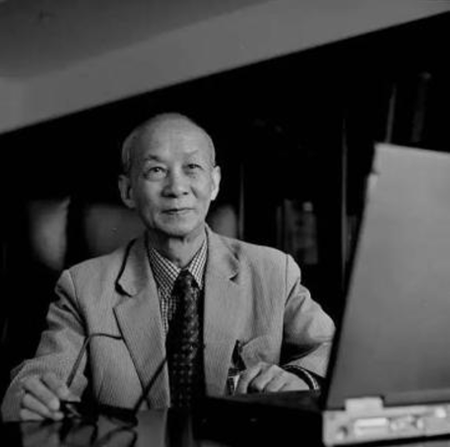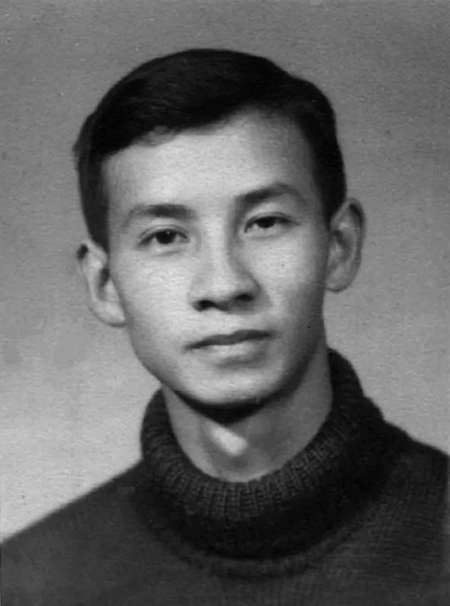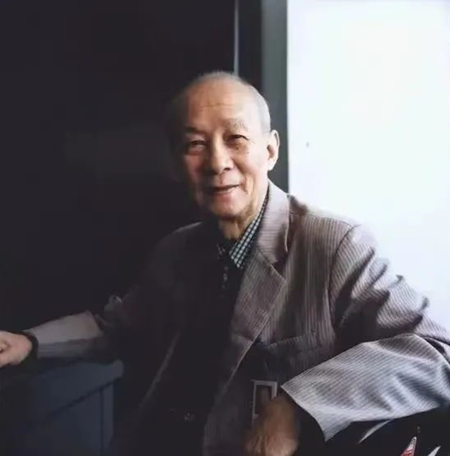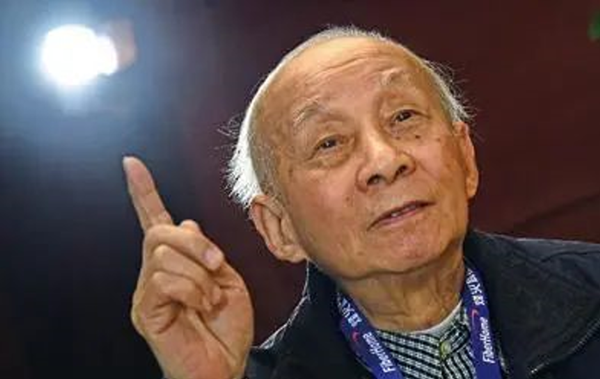Zhao Zisen: From 'a beam of light' to 'a city of optics'
Zhao Zisen, chief scientist of Optics Valley of China (OVC), academician of the Chinese Academy of Engineering, and an expert in optical fiber communication in China, is a principal founder and a recognized pioneer of China's optical fiber communication technology. He has made outstanding contributions to the nation's optical fiber communication industry.
For over 40 years, Zhao has been dedicated to studying optics, witnessing the evolution of the Chinese optical fiber industry from its inception to becoming a global front runner, and observing the transformation of OVC from "a beam of light" to "a city of optics".
In 1979, inside a modestly equipped clean room at the Wuhan Research Institute of Post and Telecommunications, located near East Lake and Nanwang Mountain, Zhao, at the age of 47, drew forth China's first practical optical fiber.
In December 2018, to commemorate the 30th anniversary of OVC and the 40th anniversary of China's reform and opening-up policy, the list of "30 Innovative People" was officially released. Zhao from the Chinese Academy of Engineering secured a place on this list with resounding approval. He was honored as follows: "Recognized as the father of China's optical fiber, Zhao fashioned the country's inaugural practical optical fiber. Adhering to his lifelong commitment to serving the nation through science and technology, Zhao established the Optics Valley of China."

'We must work hard for the revitalization of China'
Zhao was born in Shanghai in 1932. As a child, he cultivated a wide array of interests, particularly in science and crafts. Throughout his elementary and middle school years, he crafted hydrogen balloons, ore radios, model gliders, and violins using whatever simple materials at hand.
In 1937, the Battle of Songhu erupted, tearing the country asunder. Zhao, merely 5 years old at the time, fled with his family, seeking asylum within the British Concession. "Those of my generation experienced wars and have formed an outlook on life — not for fame, nor for wealth, but to work diligently for the revitalization of China," Zhao reflected during an interview with reporters.

Young Zhao Zisen [Photo/mmcs.org.cn]
In 1950, Zhao began his studies at Shanghai Datong University, an institution renowned for its science and technology programs. He opted for his preferred disciplines: electronics, electromechanics, and telecommunications, which would later become the cornerstone of his research and development and the production of optical fiber.
Becoming the 'father of China's optical fiber'
In 1973, Zhao chanced upon a piece of news in a foreign magazine while in the library, revealing that the United States was engaged in optical fiber communication. Zhao, driven by an insatiable thirst for scientific exploration, immediately recognized that optical communication held immense potential for the future.
The proposition for a scientific research project to develop "optical fiber communication" met resistance; the majority disapproved. Nevertheless, Zhao, alongside a few steadfast colleagues, determinedly embarked on the study of optical fibers.
Lacking a designated laboratory, they resorted to performing chemical experiments in the cleaning room adjacent to the toilet in the laboratory building. In the absence of prefabricated equipment, they turned to old machine tools for makeshift solutions. Without a precision aligner at their disposal, they ingeniously crafted one with screws and modeling clay.
In March 1976, within the modest confines of a laboratory at the Wuhan Research Institute of Post and Telecommunications, China's inaugural quartz optical fiber — a 17-meter-long "glass filament" — gently passed through Zhao's hands.
That same year, the former Ministry of Posts and Telecommunications orchestrated the "Posts and Telecommunications Industry Learning from Daqing Spirit" Exhibition, calling upon its divisions to showcase new technological advancements. With the newly created quartz optical fiber in tow, Zhao journeyed to Beijing.
Within a fortnight, the Wuhan Research Institute of Post and Telecommunications was met with an edict from the ministry: "Optical fiber communication is a paramount project of the Ministry of Posts and Telecommunications."
By 1979, Zhao's team successfully fabricated China's inaugural practical optical fiber, boasting a mere attenuation of 4 decibels per kilometer, effectively launching the nation's optical fiber communication industry and enshrining Zhao as the recognized "father of China's optical fiber".

From the lab to the market
In 1981, the Ministry of Posts and Telecommunications alongside the State Science and Technology Commission made the decision to establish an optical cable communication practical system in Wuhan, dubbed the "82 Project" due to its planned completion year of 1982. Zhao led the behind-the-scenes coordination of the project.
On December 28, 1981, China unveiled its first practical optical fiber communication line in Wuhan, heralding the triumph of the "82 Project".
After the "82 Project," Zhao and his team successfully completed a series of short- and long-distance optical fiber communication projects. Notably, the 3,046-kilometer "Beijing-Wuhan-Guangzhou Project”, finalized in 1993, traversed five provinces and one municipality including Beijing, Hubei, Hunan and Guangdong. At that time, it was celebrated as the longest overhead optical cable communication line not only in China but also in the world.
Within a decade, Zhao and his team had erected comprehensive, high-speed optical fiber communication lines throughout the nation, culminating in the construction of China's information superhighway.
From 'a beam of light' to 'a city of optics'
On May 7, 2000, 26 academicians in Wuhan, among them Zhao and Yang Shuzi, jointly supported a petition for the authorization of the CPC Central Committee and the State Council to establish a national optoelectronic information industry base in Wuhan — Optics Valley of China (OVC). On May 31, the Wuhan OVC Steering Group appointed Zhao and Li Deren as the chief scientists for OVC. Subsequently, on June 30, the Ministry of Information Industry responded formally, expressing support for the creation of an optoelectronic industry base that would integrate technical research and development, product production, business incubation, and talent training within the nationally recognized Wuhan East Lake High-tech Development Zone. With this support, Wuhan OVC was officially launched.
On February 28, 2001, the Ministry of Science and Technology officially sanctioned the creation of a national optoelectronic information technology industrialization base in Wuhan, known as Wuhan OVC. Following its establishment, the base swiftly achieved its projected objectives. Remarkably, in less than six years — from its inception in 2001 to its culmination in 2007 — Wuhan OVC evolved into the world’s preeminent R&D and production hub for optoelectronic products.

On December 16, 2016, Academician Zhao reflects on the development of optical fiber communication. [Photo/mmcs.org.cn]








